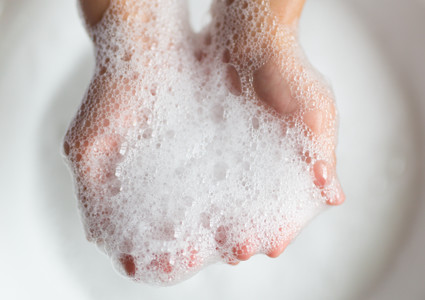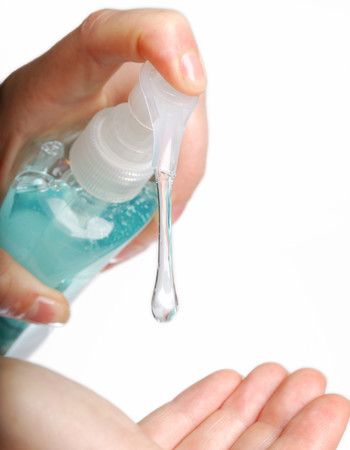




Healthy Lifestyle
Practice Proper Hand Hygiene to Help Keep Yourself and Others Healthy
Published: Dec. 4, 2022“Wash your hands.”
So you should have a pretty good idea of how important regularly and properly cleaning your hands is to keeping yourself and others around you healthy.
But are you doing it enough? Are you doing it correctly? And when it comes to killing germs, how does washing with soap or water compare with using hand sanitizer?
Hand Hygiene and Your Health
As a general rule, washing your hands with soap and water is your best defense against germs, according to the Centers for Disease Control and Prevention (CDC). But there are some exceptions.
Knowing when and how to use each method is important in the battle against infection. Follow the CDC guidelines below.
 How To Properly Wash Your Hands
How To Properly Wash Your Hands
- Wet your hands with clean running water and apply soap.
- Create a lather by rubbing your hands together.
- Scrub all surfaces of your hands for 20 seconds. This includes your palms, the backs of your hands, fingers, between your fingers and under your nails. Pro tip: Try singing the “Happy Birthday” song twice if you need help judging 20 seconds.
- Rinse your hands under clean running water.
- Dry your hands using a clean towel, or air dry them.
When To Wash Your Hands
- Before, during and after preparing food
- Before eating
- Before and after caring for someone who is sick
- Before and after treating a cut or wound
- After using the bathroom, changing diapers or cleaning up a child who has used the bathroom
- After blowing your nose, coughing or sneezing
- After touching an animal, animal food or treats, animal cages, or animal waste
- After touching garbage
- If your hands are visibly dirty or greasy
 How To Use Hand Sanitizer
How To Use Hand Sanitizer
Use an alcohol-based hand sanitizer that contains at least 60 percent alcohol. Supervise young children to prevent swallowing.
- Apply the sanitizer, putting enough on your hands to cover all surfaces.
- Rub your hands together until they feel dry. This should take about 20 seconds.
Note: Don’t rinse or wipe off the hand sanitizer before it’s dry; it may not work as well against germs.
When To Use Hand Sanitizer
- Before and after visiting someone in a hospital or nursing home.
- In cases when handwashing is necessary but soap and water are not available, use an alcohol-based hand sanitizer and wash with soap and water as soon as you can.
Note: Don’t use hand sanitizer if your hands are visibly dirty or greasy. Wash your hands with soap and water instead.
Our Commitment to Hand Hygiene
As Methodist’s service leader for epidemiology, I’m on the front lines of developing infection prevention and control strategies. Here’s how that looks on a daily basis:
Expectation: In Methodist hospitals and clinics, the expectation is that hand hygiene is performed before and after each patient care opportunity. For our health care providers, that means using hand sanitizer containing 70 percent alcohol in most settings.
Access: We strongly believe that better access to hand-hygiene products leads to better results. That’s why you see stationary dispensers, wall-mounted dispensers, tabletop pumps, personal bottles and alcohol-impregnated wipes in Methodist hospitals and clinics.
Education: We stress the importance of excellent hand hygiene whenever we talk with staff members who care for patients. There is also information posted throughout our facilities to help patients and family members, as well as to remind staff members to perform proper hand hygiene.
Keeping Hands Clean
Ensuring excellent hand hygiene at our facilities is crucial to our staff’s efforts to break the chain of infection. But you don’t have to be a health care provider to make an impact. We all must work together to stop the spread of germs.
For more on how you can keep stay healthy year-round, contact your Methodist Health System primary care provider.
More Resources
- Find similar articles in our healthy lifestyle section.
- Follow Methodist Health System on Facebook, Instagram and Twitter


